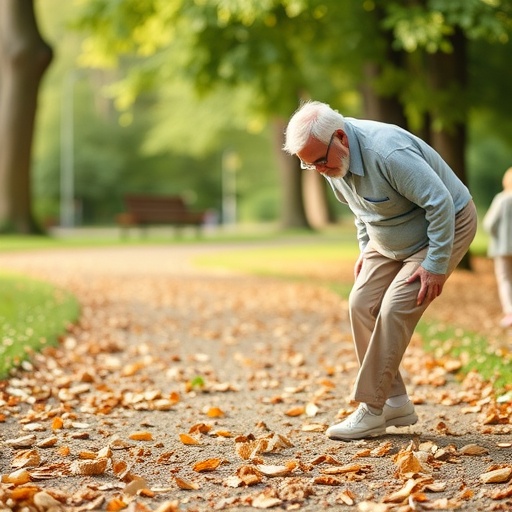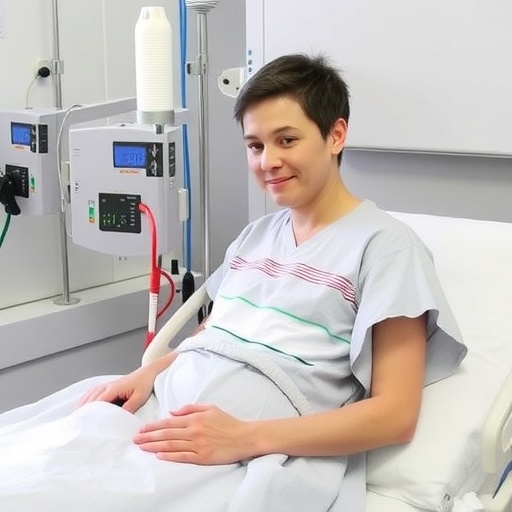
In the realm of geriatric medicine, falls remain a significant concern, leading to severe health complications and even fatalities among older adults. A recent study led by H. Al Hamad and B. Sathian critically evaluates the World Falls Guidelines established in 2022, shedding light on the inadequacies within these directives. As the aging population continues to grow worldwide, it is crucial to address the nuances of fall prevention—a topic that is gaining increasing attention within healthcare discussions.
The primary focus of the study is to reconsider the existing guidelines which, although intended to provide a comprehensive framework for fall prevention, may lack pivotal insights rooted in latest research. The authors argue that without incorporating contemporary findings and insights into the unique needs of older adults, these guidelines risk becoming obsolete. This study is not just a mere review; it is a call-to-action for practitioners, researchers, and policymakers alike to rethink their strategies regarding falls among older populations.
Falls are not merely an unfortunate mishap; they are a complex interplay of numerous factors including environmental, physiological, and psychological elements. The World Falls Guidelines aimed to address these multifaceted issues but often fell short of creating tailor-made interventions suited to various demographics within the older adult community. Al Hamad and Sathian emphasize the importance of personalized approaches that reflect the individual risks and attributes of older adults rather than one-size-fits-all recommendations.
In their analysis, Al Hamad and Sathian delve into the roles of sensation and balance as they pertain to falls. They highlight recent advancements in balance training technologies and mobile health applications that monitor mobility patterns in real-time. By leveraging modern technology, it becomes possible to devise more robust fall prevention strategies that enhance the quality of life for older adults and significantly reduce the risks associated with falls.
Additionally, they point out the psychological dimensions of fall risks that often go unnoticed. Fear of falling can lead to a self-fulfilling prophecy where individuals become more sedentary, which ironically heightens the risk of experiencing a fall. The emotional well-being of older adults, thus, is an integral component of any fall prevention program. Al Hamad and Sathian argue that guidelines must encompass strategies not just focused on physical health but also on mental resilience and social engagement.
Moreover, the study underscores the necessity for interdisciplinary collaboration in addressing fall prevention. Healthcare providers from various domains—physical therapy, occupational therapy, geriatric medicine, and mental health—must work synchronously to devise comprehensive solutions. Emphasizing a cooperative model, Al Hamad and Sathian suggest that interdisciplinary programs not only enhance the effectiveness of fall prevention strategies but also foster a communal approach to problem-solving.
Implementation of the revised guidelines calls for more rigorous data collection and analysis. Al Hamad and Sathian advocate for using large-scale data analytics to identify high-risk groups within older adult populations and to monitor the efficacy of various intervention strategies on a continuous basis. Collecting data on falls, near-falls, and interventions can provide invaluable insights that guide decision-making for future fall prevention initiatives.
Given the rapid evolution of technology, the integration of virtual and augmented reality training into fall prevention strategies is on the rise. These innovative tools provide older adults with the necessary skills to navigate their surroundings safely and independently. The authors posit that virtual reality environments can simulate real-world scenarios that challenge balance and coordination, allowing individuals to practice in a risk-free setting.
The distinction between intrinsic and extrinsic factors contributing to falls is another critical aspect of the authors’ appraisal. Intrinsic factors may include musculoskeletal disorders and age-related cognitive decline, while extrinsic factors can be environmental hazards like uneven stairs or poor lighting. Effective fall prevention strategies will require addressing these variables through a dual approach that considers both the individual’s health status and their living environment.
Al Hamad and Sathian’s work doesn’t shy away from challenging the status quo. They critique the established norms surrounding medication management in older adults, emphasizing that polypharmacy—a common issue—can significantly increase the risk of falls. By advocating for more judicious prescribing practices, they highlight an important area where healthcare providers can intervene to reduce fall risks.
Ultimately, the research advocates for the continuous updating of guidelines to reflect emerging scientific evidence and societal changes. As the geriatric population is projected to increase dramatically over the coming decades, the urgency for effective fall prevention strategies cannot be overstated. The call for revisiting the 2022 World Falls Guidelines is not merely an academic discussion; it is a request for urgent action to prioritize the safety, mobility, and overall well-being of older adults on a global scale.
This critical appraisal serves as an essential reminder that fall prevention should be an evolving conversation, rich with contributions from interdisciplinary fields and grounded in the latest research. As we move forward, it is imperative for healthcare systems to adopt a proactive stance on fall prevention, ensuring that guidelines remain relevant and effective. By doing so, we will be better equipped to safeguard not just the physical health of older adults but also their dignity, independence, and quality of life.
Strengthening the foundation of fall prevention through research and policy revisions will require a concerted effort from all stakeholders involved in geriatric care. Whether it’s developing cutting-edge technology or enhancing community safety measures, the focus must always remain on customizing approaches that bridge the gap between research and practice. Only then can we hope to redefine the narrative surrounding falls in older adults and embrace a future that embodies safety and wellness.
The implications of this study extend far beyond the realm of academia and healthcare. As our society ages, we will be faced with the moral imperative of ensuring that our elders can navigate the world safely. Al Hamad and Sathian encourage all readers—whether they be caregivers, families, or healthcare professionals—to engage in this important dialogue. The future of fall prevention hinges on our ability to adapt, innovate, and, most importantly, act.
Subject of Research: Fall Prevention in Older Adults
Article Title: Rethinking Falls Prevention in Older Adults: A Critical Appraisal of the 2022 World Falls Guidelines
Article References:
Al Hamad, H., Sathian, B. Rethinking falls prevention in older adults: a critical appraisal of the 2022 world falls guidelines.
Eur Geriatr Med (2025). https://doi.org/10.1007/s41999-025-01298-6
Image Credits: AI Generated
DOI: https://doi.org/10.1007/s41999-025-01298-6
Keywords: Falls, older adults, fall prevention, guidelines, health technology, interdisciplinary collaboration, psychological well-being, virtual reality, data analytics.
Tags: call to action for fall preventioncomprehensive fall prevention frameworkcontemporary research on fall preventioncritical evaluation of World Falls Guidelinesenvironmental factors in fall risksfall prevention strategies for seniorsgeriatric medicine and fallshealth complications from falls in older adultspolicymakers and fall prevention strategiespsychological aspects of falls in seniorsreevaluating fall prevention guidelinesunique needs of aging populations




